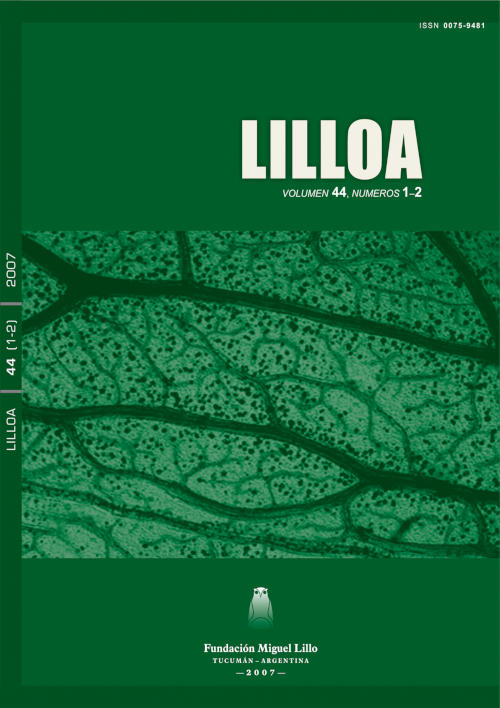Evaluación de parámetros morfoanatómicos foliares para la identificación de Rubus imperialis Cham. & Schltdl. (Rosaceae) en la Selva Montana de Tucumán, Argentina
Keywords:
Rubus, zarzamora, leaf morphoanatomy, TucumánAbstract
Podazza, G. & M. G. Gallardo. 2007. “Morphoanatomical parameters. A contribution to identify Rubus imperialis Cham. & Schltdl. (Rosaceae) from Tucumán, Argentina”. Lilloa 44 (1-2). In Yungas’ Montane Forests in the Native Northwest Argentina (NOA) species of Rubus boliviensis and R. imperialis, are indistinctly cited, thus suggesting their coexistence. It would be valuable to have the leaf surface morphological and anatomical traits that allow complementing the species descriptions and identifying those traits that present said variations. In this work, the were analyzed morphological and anatomical parameters from the leaf surface upper middle third, which belong to individuals from sites located at 700 and 1.100 masl (meter above sea level) (Tucumán, Argentina). The above menthioned parameters are: tissue thickness, trichome and stomata density and classification, and the other way around SLA (specific leaf area in cm2.g) and 1/SLA (specific foliar mass in g.cm-2). The species present in Tucumán corresponds to R. Imperialis and has specific foliar anatomical traits such as the presence of a substomata chamber and parenchima pod around the medium nerve. In the traits analyzed at foliar level, it was evident that an altitude increase itself as increment in the photosynthetic assimilation surface.






